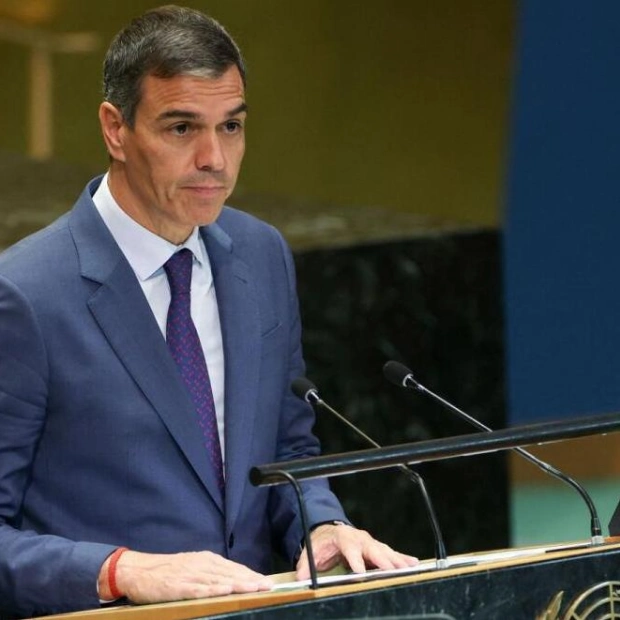Every decade, the world experiences a new generation of wireless cellular technology that significantly enhances our communication capabilities, reshaping our vision of future interactions. Each generation not only advances technology but also transforms society, prompting us to ponder the full potential of communication tech. Over the past decade, more than 700 million Indians, representing 75% of the adult population across rural and urban areas, have adopted mobile and fixed broadband services. This increase in connectivity has notably improved lives, especially among the economically disadvantaged. India has also made significant progress in telecom equipment manufacturing and exports, marking a crucial step towards a self-reliant India.
During this time, India has contributed significantly to global telecom standards, ensuring equitable service levels between rural and urban areas. The Low Mobility Large Cell rural use case, proposed by India, is now a mandatory standard for mobile communication technologies adopted by the International Telecommunications Union (ITU). Communication technology has evolved from the transformative 4G, which revolutionized gaming, to the promising 5G, offering unprecedented connectivity. As India embarks on its unique 5G journey, the global telecom sector is already preparing for the next big leap: 6G, or sixth-generation communication technology.
On March 23, 2023, Prime Minister Narendra Modi unveiled India's 'Bharat 6G Vision' manifesto, aiming to position India as a leader in the design, development, and deployment of 6G technology by 2030. Although still in its conceptual stage, 6G promises to unify human-machine and machine-machine connectivity, offering faster, more reliable, and affordable communication. With speeds nearly 100 times faster than 5G, 6G is expected to drive new communication applications that will enhance user experience and transform economies and lives globally. These advancements will include intelligent network management, integrated wireless sensing and communication, and sustainability initiatives.
For India, achieving the goals of Mission 6G involves aligning research efforts to support the implementation of 6G tailored to the country's unique needs. The hyper connectivity and advanced user experiences delivered by 6G will enable access to information, resources, and social services without time or location constraints. The arrival of 6G is poised to bridge gaps in regional and social infrastructure, offering alternatives to rural exodus and mass urbanisation. The Technology Innovations Group has established six task forces to investigate the key pillars of the 6G Vision.
The Technology Innovations Group has proposed a comprehensive strategy emphasizing extensive research and development in key areas such as mmWave and Terahertz communications, fiber-broadband advancements, Tactile Internet and Remote Operations, multi-sensor man-machine interfaces, and devices leveraging edge cloud computing resources. India's vision for 6G extends beyond technological advancement, including significant strides in AI integration, Space-Terrestrial Integration, and combined communication and sensing within (Sub) Terahertz bands.
A critical component of this roadmap is the establishment of a robust Research & Development (R&D) funding mechanism. This will ensure sustained progress in identifying priority research areas by involving a broad spectrum of stakeholders, including industry leaders, academia, and service providers. The approach will cover the full spectrum of research activities, from theoretical studies and simulations to proof-of-concept prototypes and early market interventions driven by start-ups. This collaborative effort is geared towards positioning India as a leader in the global 6G arena.
India’s ambitions for 6G are not limited to domestic applications; they envision the country playing a pivotal role on the global stage. The nation’s ability to leverage its technological prowess can fast-track the commercialization of 6G technologies and pave the way for future innovations. The vision includes the development of customized 6G implementation plans, tailored to India’s unique needs, while also aligning with global standards to ensure widespread acceptance and support. The journey towards 6G will be structured in two phases.
The first phase will focus on ideation, assessing the potential and risks of various technological pathways, and testing proof-of-concept implementations. The second phase will involve the conceptualization and delivery of scalable technology solutions that can serve both India and the global community. This phased approach will allow India to thoroughly explore the inherent possibilities of 6G and to craft solutions that are not only cutting-edge but also practical and relevant. To achieve the ambitious goals of smart traffic management, virtual reality (VR)/virtual navigation, smart and highly accurate environmental monitoring, and other transformative applications promised by 6G, India will launch a dedicated 6G Mission.
This mission will integrate all associated technologies and will be supported by substantial financial backing, ensuring that the nation’s 6G aspirations are not just theoretical but actionable and achievable. India's focus on multi-platform next-generation networks is at the heart of this mission. Key areas include Dense Optical Networks, AI/ML for air interface optimization, Intelligent Network Operations, Intelligent Reflective Surfaces, Efficient Low Earth Orbit (LEO) satellites, High-Altitude Platform Systems (HAPS), and User-Defined Virtualized Air Interfaces. These technologies represent the future of telecommunications, and India’s investment in these areas underscores its commitment to being at the forefront of the 6G revolution.
Standardisation is another critical aspect of India’s 6G strategy. By investigating and implementing methods to standardise 6G technologies and devices, India can provide a structured and foresighted approach to its 6G roadmap. This will ensure that resources are efficiently allocated and that India emerges as a key player in the global 6G technology implementation and adoption. In conclusion, 6G is anticipated to play a pivotal role in bridging the gap in e-service provision for both urban and rural populations.
It is expected to advance the United Nations Sustainable Development Goals (SDGs) and significantly enhance the quality of life and opportunities available. The innovations brought about by 6G will address the specific needs of the country, boost productivity, and particularly benefit rural areas where telecommunications are essential for overcoming geographical barriers. Additionally, these technologies will offer vast opportunities for Indian entrepreneurs to innovate and develop new products based on their intellectual property, not only for the domestic market but also for a global audience.






